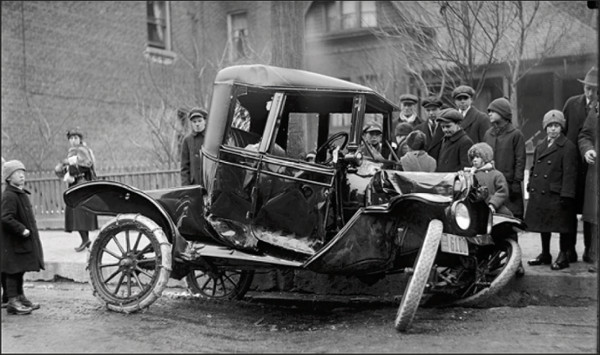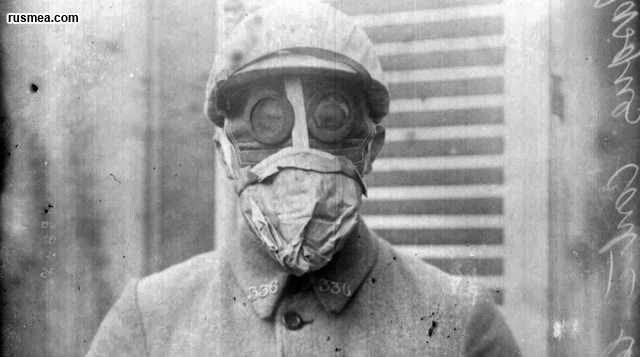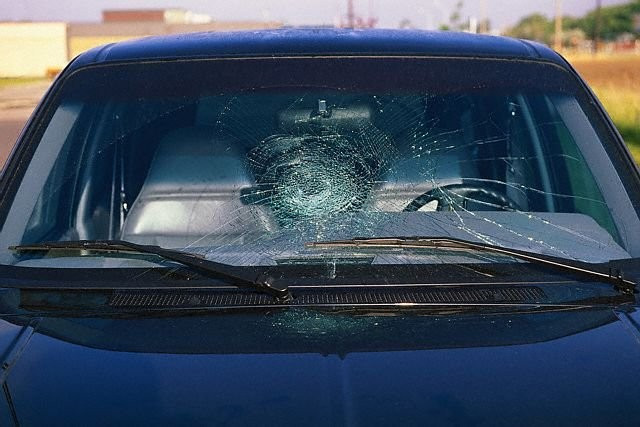Did you know: What do auto glass do without breaking when an accident?
According to the report of the World Health Organization (WHO), millions of people die every year due to road traffic accidents. A terrible number but if there is no broken glass car broken into pieces when collided like normal glass, this number will certainly increase much higher.
So when is the safety car glass made and what is it, and how safe is it?
In 1903, Edouard Benedictus, a French chemist happened to find a solution that prevented the car glass from breaking into pieces when a collision occurred.

French chemist Edouard Benedictus.
In one experiment, he accidentally dropped a glass vase, but unexpectedly, it did not crumble but only cracked and retained its shape. The reason is that the bottle previously contained collodion, a solution of cellulose nitrate cellulose. After this solution evaporates, leave a transparent layer of cellulose nitrate, almost invisible on the walls of the flask.
When he read the newspaper about an accident, the driver and the passengers were seriously injured by ordinary debris, Benedictus thought of the glass vase he dropped without breaking. He began experimenting with collodion solution.
 When the car's windshield is still made of ordinary glass.
When the car's windshield is still made of ordinary glass.
After a lot of experiments, Benedictus has released safety glasses made up of two glass plates stuck together by means of cellulose nitrate in the middle. With this safety glass, even with hammering, they still retain the old shape, only cracked, not creating debris.
Benedictus patented this type of safety glass in 1909 under the name "three layers" (Triplex).
Benedictus triplex is very good and safe, but due to high cost, it is not accepted by car companies. But this new material received the attention of the military and was used as a lens for the gas mask during the First World War.
 Glasses for poison masks made from safety glasses.
Glasses for poison masks made from safety glasses.
Henry Ford, the first car company to use triplex lenses in 1919. And after 10 or 15 years, all other automakers also use safety goggles for their cars.

Currently, car manufacturers continue to research and produce many types of car glasses with higher safety levels to minimize damage to vehicles and people in the car when an accident occurs.
- How to avoid being mistaken for "brake pedal and accelerator"?
- Great way to drive cars safely for women
You should read it
- 4 best smart glasses in 2019
- Google Glass has a new boss
- Rounded his eyes to see the bullet shatter when shot at the glass of 'Dutch tears'
- How to Remove Tempered Glass
- No need to be a singer, you can still smash a glass of water with singing
- Google invites a programmer to buy Glass
- How to Craft Glass in Minecraft
- Slow-motion video of 78,000 frames per second recorded the broken speed of the glass, 10 times faster than the fastest race car in the world
May be interested
- How to Remove Tempered Glass
 tempered glass is impact-resistant and often used to cover delicate surfaces such as phone screens. if your glass screen shatters, you can lift the tempered glass screen protector to uncover an undamaged surface beneath it. tempered glass...
tempered glass is impact-resistant and often used to cover delicate surfaces such as phone screens. if your glass screen shatters, you can lift the tempered glass screen protector to uncover an undamaged surface beneath it. tempered glass... - Is Auto-GPT worth using without GPT-4?
 auto-gpt is an automation ai model that uses gpt-3.5 or gpt-4 to complete tasks independently. in other words, auto-gpt can develop its own prompts and respond automatically to accomplish a goal.
auto-gpt is an automation ai model that uses gpt-3.5 or gpt-4 to complete tasks independently. in other words, auto-gpt can develop its own prompts and respond automatically to accomplish a goal. - How to Craft Glass in Minecraft
 glass is a useful item that can be crafted in the video game minecraft. this decorative block allows light to shine through and prevents anything else from reaching you. most monsters, including enderman, cannot even see your character through the glass.[1] x research source you can use glass to create a safe greenhouse to protect yourself from threats at night, or turn it into stained glass for decorations and bottles potion bottle.
glass is a useful item that can be crafted in the video game minecraft. this decorative block allows light to shine through and prevents anything else from reaching you. most monsters, including enderman, cannot even see your character through the glass.[1] x research source you can use glass to create a safe greenhouse to protect yourself from threats at night, or turn it into stained glass for decorations and bottles potion bottle. - Glass cleaning tools required for household use
 what tools are needed in every household in cleaning, cleaning windows, glass doors? let's explore in the following article with tipsmake !
what tools are needed in every household in cleaning, cleaning windows, glass doors? let's explore in the following article with tipsmake ! - Experience in choosing to buy glass ovens
 in every family, an oven is an indispensable item to be able to process many delicious dishes for loved ones. in the market, the housewife is always confused when choosing, so you can refer to the article below to buy a quality glass oven right away.
in every family, an oven is an indispensable item to be able to process many delicious dishes for loved ones. in the market, the housewife is always confused when choosing, so you can refer to the article below to buy a quality glass oven right away. - How to Achieve a Settlement After Being Involved in a Truck Accident
 if you're unlucky enough to be involved in a truck accident, you may have suffered property damage, experienced injuries, and lost income as a result. even more so than other road accidents involving cars and other small vehicles, the...
if you're unlucky enough to be involved in a truck accident, you may have suffered property damage, experienced injuries, and lost income as a result. even more so than other road accidents involving cars and other small vehicles, the... - How to Report an Accident to Insurance
 if you're involved in a car accident, you need to report the accident to the responsible party's insurance company. if the other driver is at fault, or if you don't have comprehensive or collision insurance, you'll likely be reporting to...
if you're involved in a car accident, you need to report the accident to the responsible party's insurance company. if the other driver is at fault, or if you don't have comprehensive or collision insurance, you'll likely be reporting to... - How to Make Car Accident Claims
 car accidents are one of the worst and most traumatic events you can experience in your daily life. with luck, if you and everyone else involved in the accident survive uninjured, the next worst part will be dealing with insurance...
car accidents are one of the worst and most traumatic events you can experience in your daily life. with luck, if you and everyone else involved in the accident survive uninjured, the next worst part will be dealing with insurance... - How to Determine Who Is at Fault in a Car Accident
 in general, the driver responsible for the accident has to pay for all damages. however, many states have complicated systems of determining fault, whereby a percentage of the blame can be assigned to each driver, resulting in different...
in general, the driver responsible for the accident has to pay for all damages. however, many states have complicated systems of determining fault, whereby a percentage of the blame can be assigned to each driver, resulting in different... - 4 best smart glasses in 2019
 the purpose of smart glasses is to provide life tracking services, while creating a platform for authentic photography and video.
the purpose of smart glasses is to provide life tracking services, while creating a platform for authentic photography and video.










 Surprise with the great use of small details on utensils
Surprise with the great use of small details on utensils Elon Musk explains the true meaning of the Tesla logo
Elon Musk explains the true meaning of the Tesla logo Decipher the mystery of the extinction that destroyed 96% of marine life
Decipher the mystery of the extinction that destroyed 96% of marine life New discovery: Dragonfly wings can kill bacteria without antibiotics
New discovery: Dragonfly wings can kill bacteria without antibiotics Why can whale carcass explode?
Why can whale carcass explode? How do people with autism look at the world?
How do people with autism look at the world?